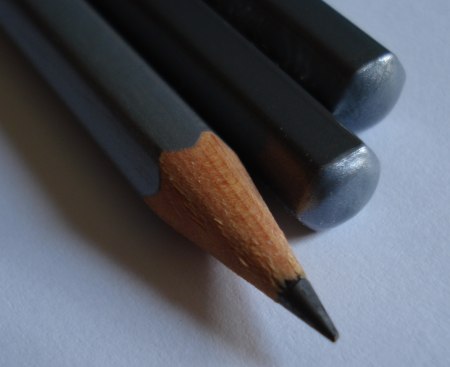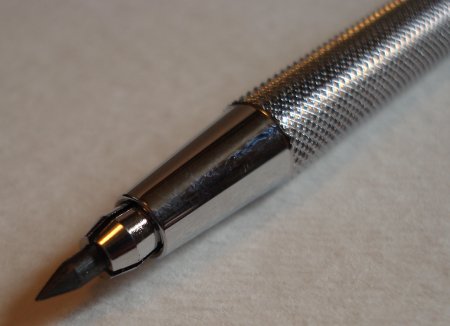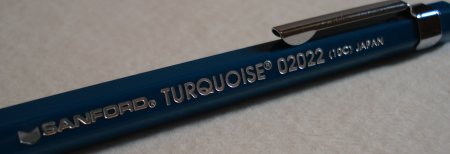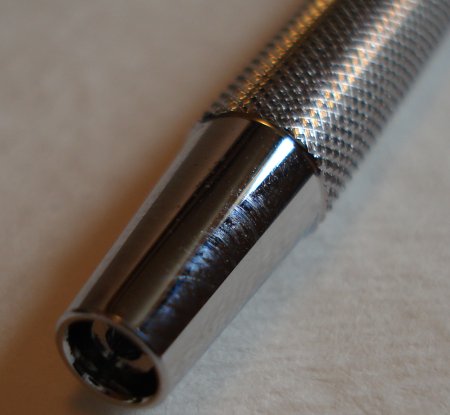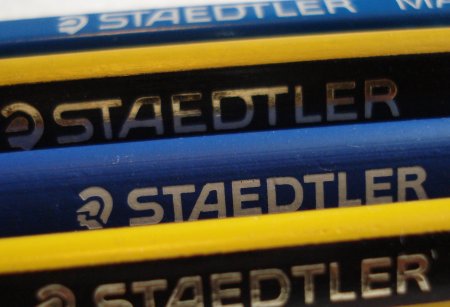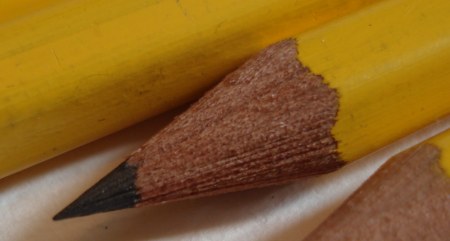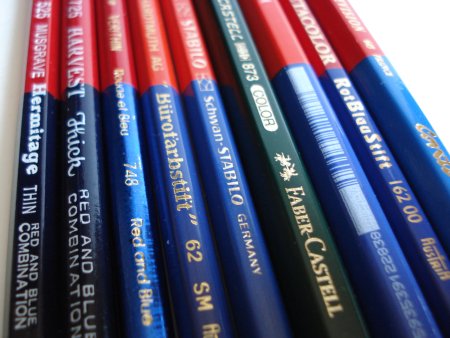
Well, I now have a Conté Television 649 red and blue pencil, as well as three other members of the elite red and blue pencil cadre.
The pencils are the Television 649, made by Conté in France, the RotBlauStift 162 00 from Cretacolor, made in Austria, a Koh-I-Noor 3423, origin unstated, and a Castell 873 Color by Faber-Castell, made in Germany.
The RotBlauStift is a regular sized hexagonal pencil, while the other three are oversized hexagonal pencils.
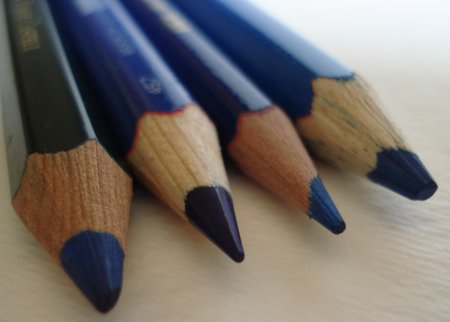
A few notes:
– Faber-Castell is definitely the rebel here, eschewing the standard red and blue for their signature forest green. I wish they hadn’t done this. There are occasions when respecting a tradition should trump branding concerns.
– The Koh-I-Noor has exceptionally utilitarian markings, with the name imprinted via something akin to a dot matrix printer.
– The Television’s wood has the same sort of look as the Grip 2001 pencil – jelutong or pulai.
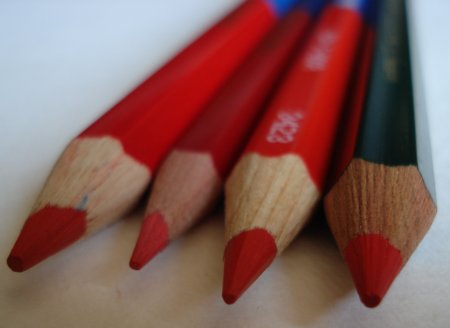
As with our previously examined red and blue pencils, there is a range of colours – the Cretaclor is light in both red and blue, the Koh-I-Noor bright and rich in both, and the others somewhere in between.
Here are trial results with the four new pencils:
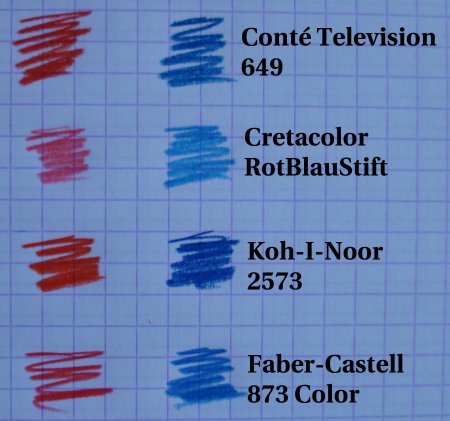
Let’s summarize the main features of the red and blue pencils that we have looked at so far:
| Manufacturer | Model | Shape | Oversize | Core |
| Conté | Television 649 | Hexagonal | Yes | 4mm |
| Cretacolor | RotBlauStift 162 00 | Hexagonal | No | 2mm |
| Faber-Castell | Castell 873 Color | Hexagonal | Yes | 4mm |
| Koh-I-Noor | 3423 | Hexagonal | Yes | 4mm |
| Koh-I-Noor | Bürofarbstift 62 | Hexagonal | No | 2mm |
| Musgrave | Hermitage Thin 525 | Hexagonal | No | 2mm |
| Musgrave | Harvest Thick 725 | Round | No | 4mm |
| Prismacolor | Verithin 748 | Round | No | 2mm |
| Schwan-Stabilo | Stabilo 8742 | Hexagonal | No | 2mm |
These traditional pencils associated with teaching and accounting still have a strong resonance. While the keyboard has supplanted pens and pencils in many areas, it is fascinating that this sub-specialty of the woodcase pencil still continues. All of these pencils shown are in active production by their manufacturers.
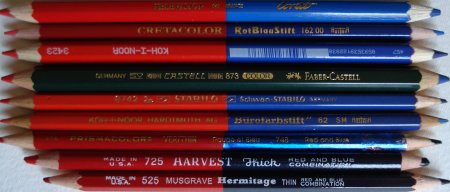
Further reading:
Red and Blue pencils (February, 2008)
Red and Blue pencils II (March, 2008)
This page at stdk.de, which has documentary quality photographs of several red and blue pencils, plus a list of known red and blue pencils in production.

